Neil Dennis developed the Denny Dart series from the AMA Cub. The Denny Darts are usually made from stock materials, but they may also be made from the materials in an AMA Cub kit. This tutorial tells you how to adapt the materials in an AMA Cub kit to make a Denny Dart Mk II H, which is only slightly more difficult to build, but flies much better. See the tutorial on the Denny Dart II H for the full details of building that plane.
There are two differences between the DD II H made from stock materials and the DD II H made from the AMA Cub kit. The DD II H has a flat wingspan of 15″. The AMA Cub paper is 8 1/2″ wide and 14″ long. You can make a DD II H wing from a single 14″ long piece cut from the AMA Cub paper, as described here, or you can cut two 3 1/8″ wide pieces from the paper and splice them together to make a 15″ long wing, similar to the way the two wing plan panels are joined, below. Cutting two pieces and splicing them together requires a bit more time and skill. Be sure to cut them so the tailplane and fin may be made from the remainder. The AMA Cub has a longer tailplane chord than the DD II H. The tailplane taper on the AMA Cub stick is longer than the taper we cut on the DD II H stick. The angle is the same, so we don’t need to modify the stick, but there will not be quite as much room for the motor. The rear motor hook can be put farther back on the taper with a spacer block to align it with the propeller hook, if you wish. (You can also use a balsa stripper to cut the motor stick into a 1/4″ wide top piece and a 1/8″ wide lower piece, then cut a block off the 1/8″ stick to form a nose block. See the AMA Cub Pennyplane tutorial for instructions on how to do that. That will make your plane a little lighter and allow room for a longer motor.)
To make a 14″ wing, print the plan from the Denny Dart II H tutorial linked above. Measure and mark 7″ from the wing tips.
Draw a new chord line between the 7″ marks on both wings.
Cut out the two wing panels.
Cut one wing panel to length along the 7″ chord line.
Cut the other panel slightly longer than 7″ to provide a margin for gluing the two panels together.
Pin or tape the longer panel to the building board and place the other on top so the 7″ centerlines exactly overlap and the two leading and trailing edges form straight lines.
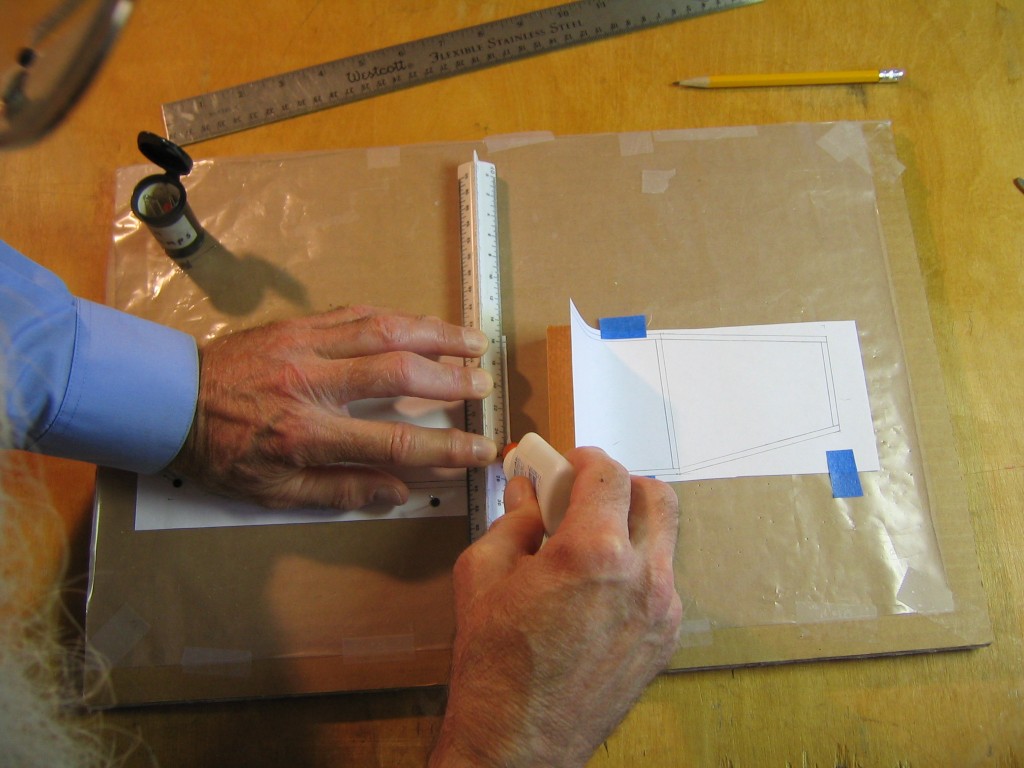 Tape, pin or weight the upper panel in place, hold the inside edge out of the way and apply glue to the overlap margin of the lower panel.
Tape, pin or weight the upper panel in place, hold the inside edge out of the way and apply glue to the overlap margin of the lower panel.
Drop the uper panel onto the lower panel so the center chords align exactly and press the two together.
Let the glue dry. If you want to teach a class using this plane, copy this and the fin and tailplane plans onto an 11″ x 17″ sheet, then make as many copies of that as required.
Place the wing plan under a protective cover to keep the wood parts from sticking to it. (If you can find 11″ x 17″ onionskin, you could build directly on the paper, as with the AMA Cub.)
Align one long edge of the AMA Cub paper with the edge of the wing and center it between the wing tips. To avoid warps, you should build the wing on a dry day. The paper should be a little less than the full 14″. See the AMA Cub Pennyplane link above for more on that.
Tape the paper down outside the margins of the wing to keep it from moving out of place.
From here on the build is according to the instructions provided in the Denny Dart Mk II H link above. I glued the sticks to the paper with Elmer’s. You can also use stick glue. I used Titebond to glue the interior ribs between the leading and trailing edges of the center panel and the tip ribs between the leading and trailing edges of the tip panels. A strong bond is required between the wood parts, so use a good wood glue. There is no glue between the leading and trailing edges of the center panel and the tip panels, because the tip panels must be bent up along the dihedral break lines and glued later. There is a temporary friction fit spreader holding the center panel flat under the central hold down stick which is glued over the leading and trailing edges.
When the glue is thoroughkly dry, you may remove the temporary spacer and cut the wing from the paper. Note that the remaining paper allows building the tail and fin so they have double blue stripes on them, see the header photo.
Block the wing center panel up 1 1/2″ from the table, hold the tips down and put glue into the dihedral joints. It will be necessary to add more glue to fill the joints, as the first application of glue will shrink. (I sometimes make a thin paste of slightly diluted glue and fine sifted, dampened sawdust to fill the joints. This takes a while longer to dry and may need to be sanded flat later. You can also cut small triangular wedges from scrap wood to fill the gap. Or you can use baking soda and CA.)
Note that the shorter edge must be shimmed up at the corner with a bit of scrap so the tip leading and trailing edges will be parallel. Sight across the wing tip chord to make sure they align exactly.
The wing is held to the motor stick with dental elastics. Sometimes one on each end of the hold down stick is sufficient. Sometimes they must be doubled over. When they are doubled over, they can be too tight to easily get onto the hold down stick. I found that using two elestics on each end of the stick worked well.
Position the elastics on the motor stick a little farther apart than the length of the hold down stick.
Hold the hold down stick in position on the motor stick and roll the elastics up over the beveled end of the hold down stick with the other hand.
Here is a video of my AMA Cub Denny Dart II H flying.
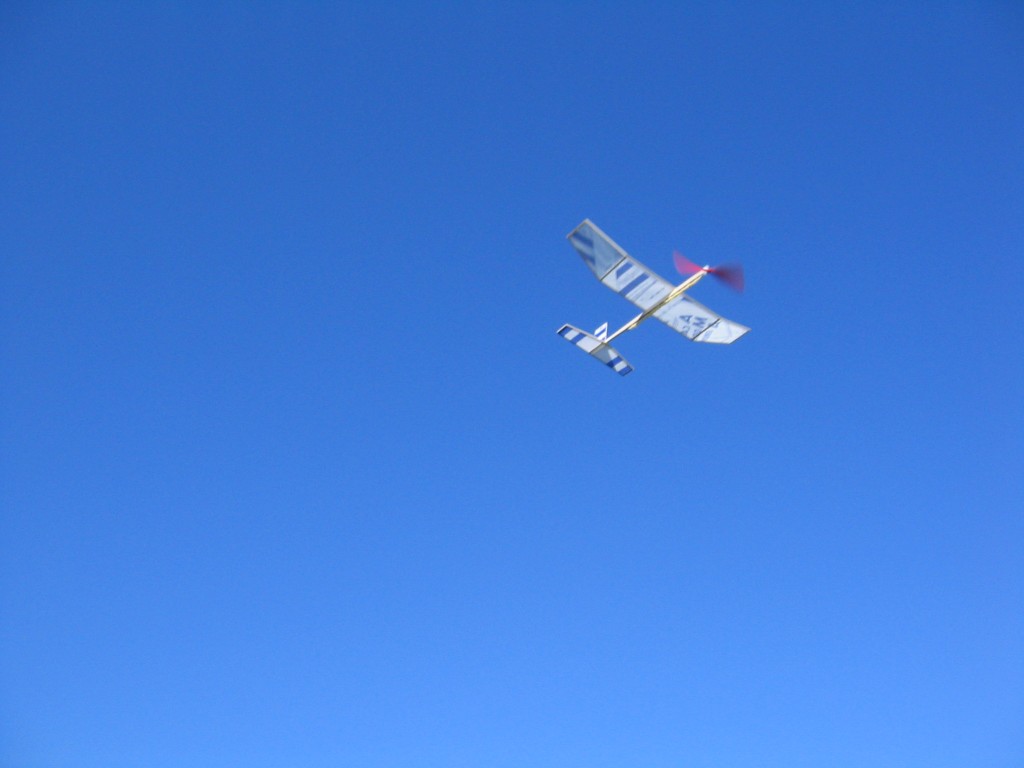
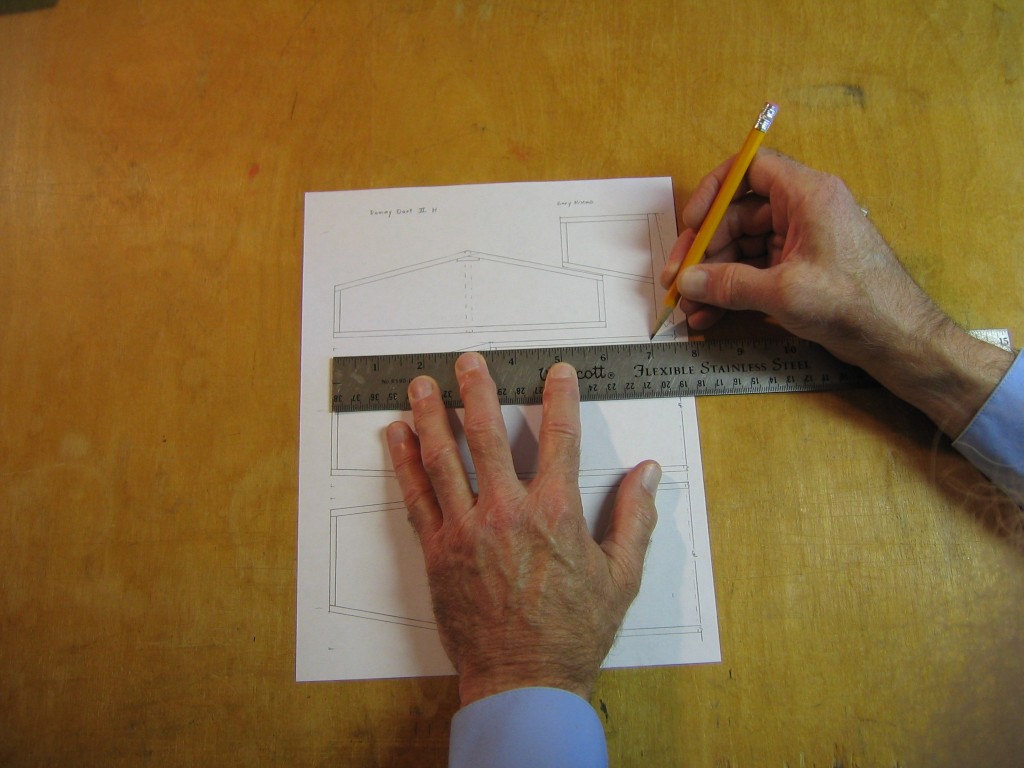
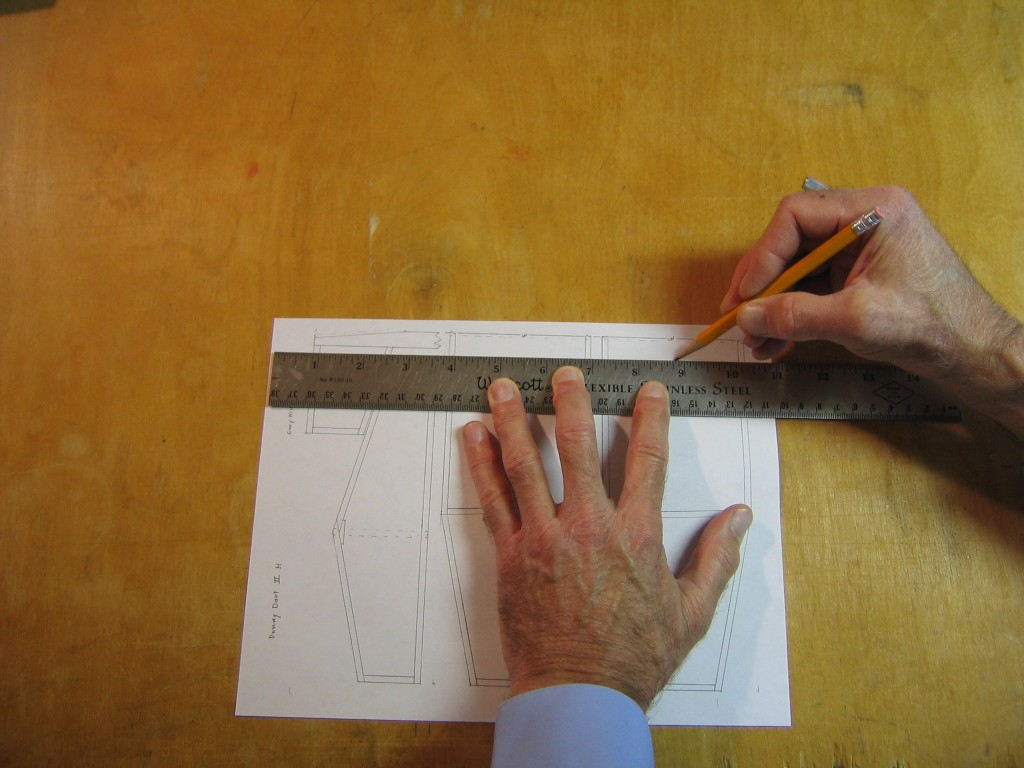
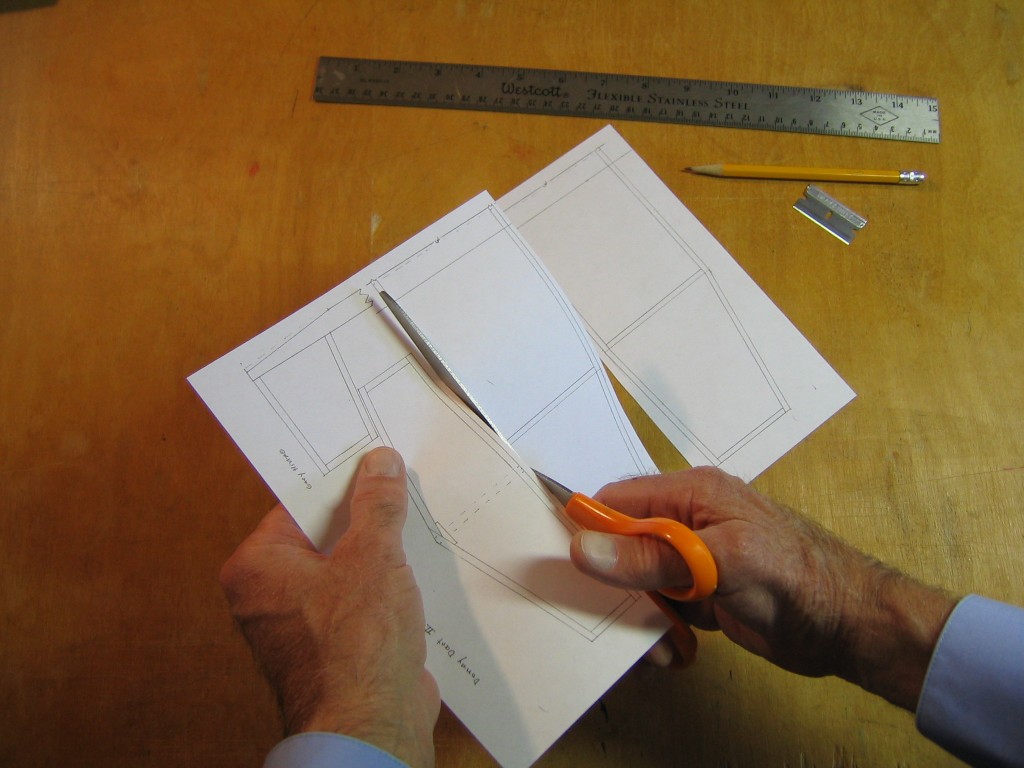
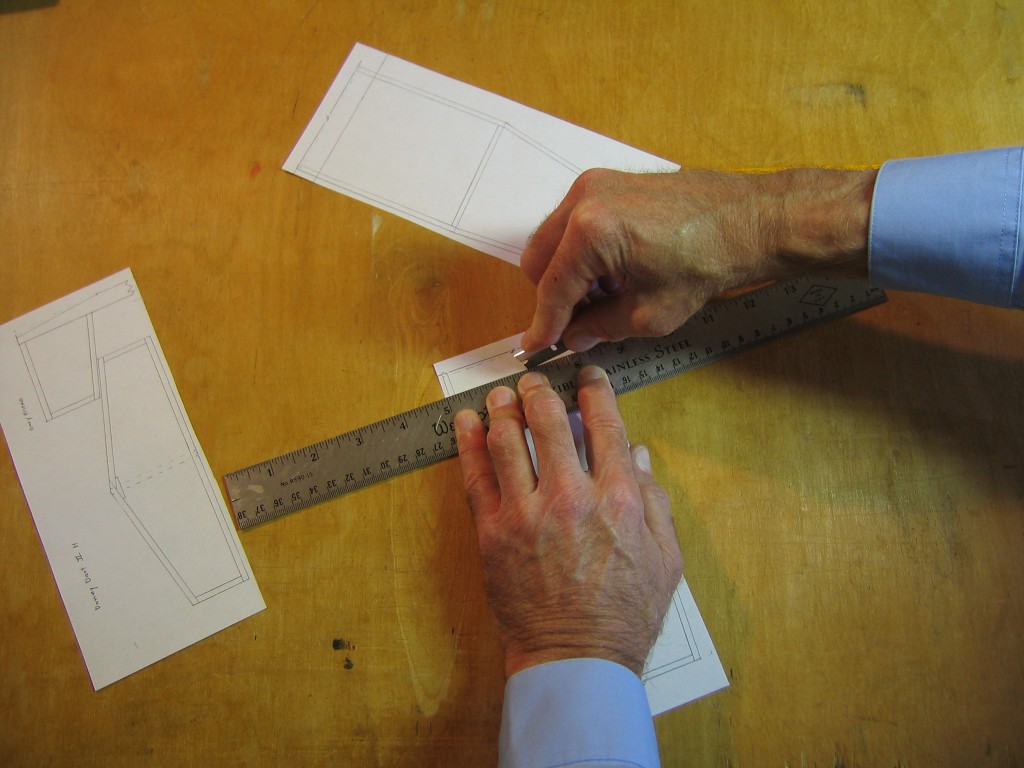
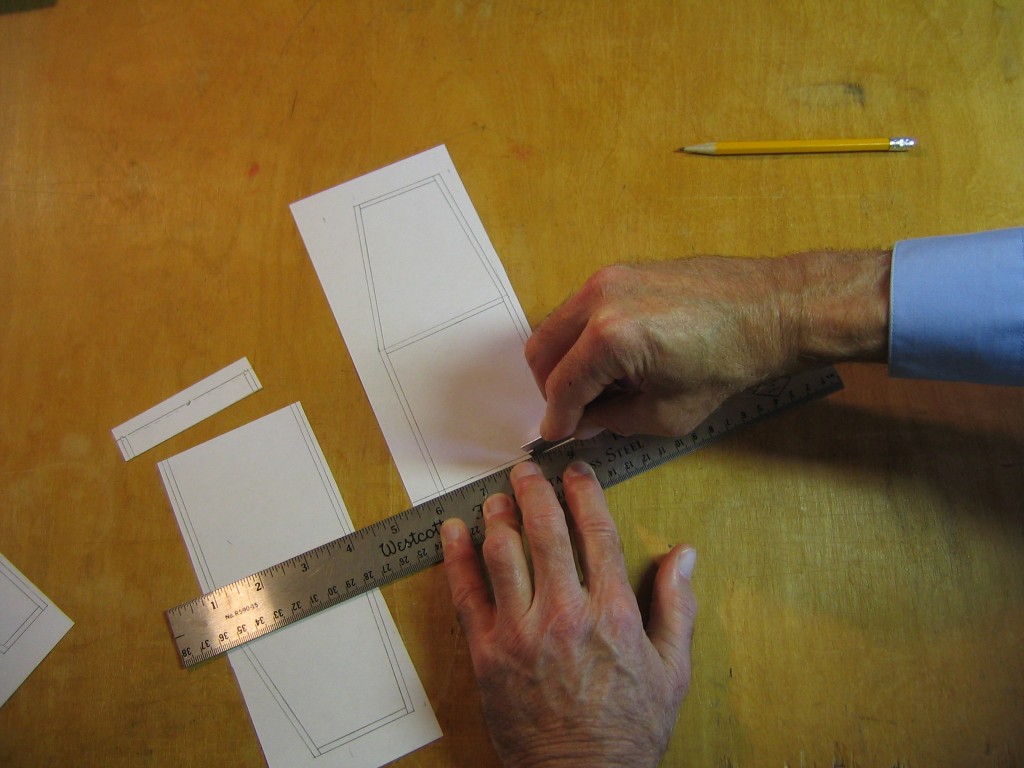
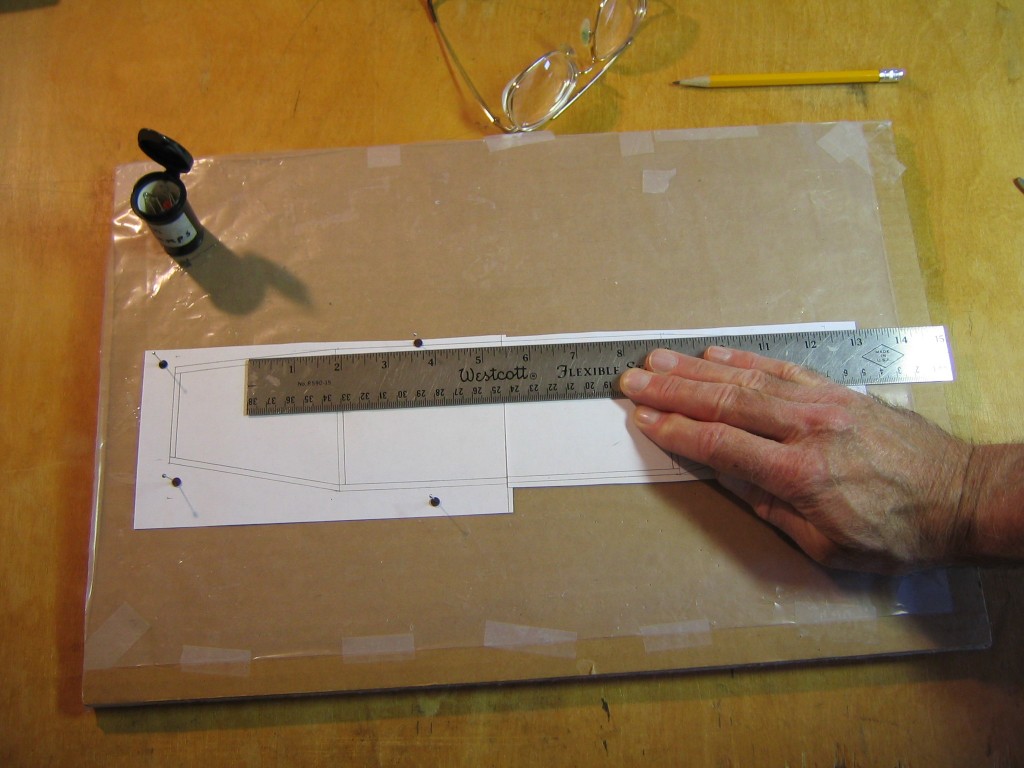
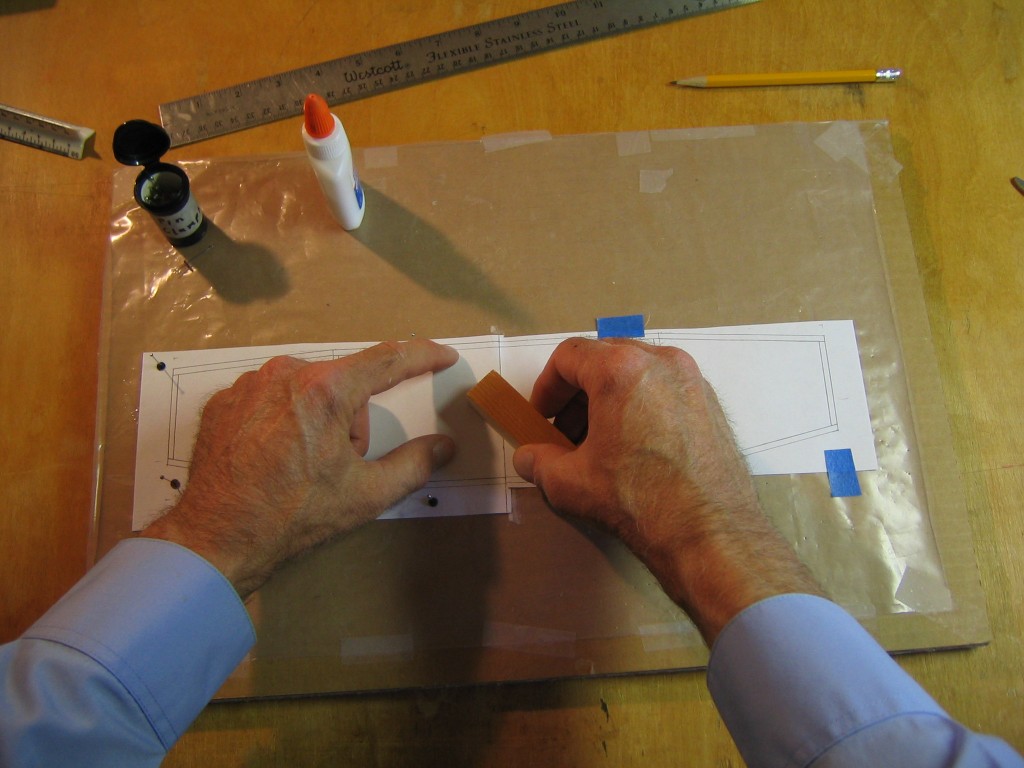
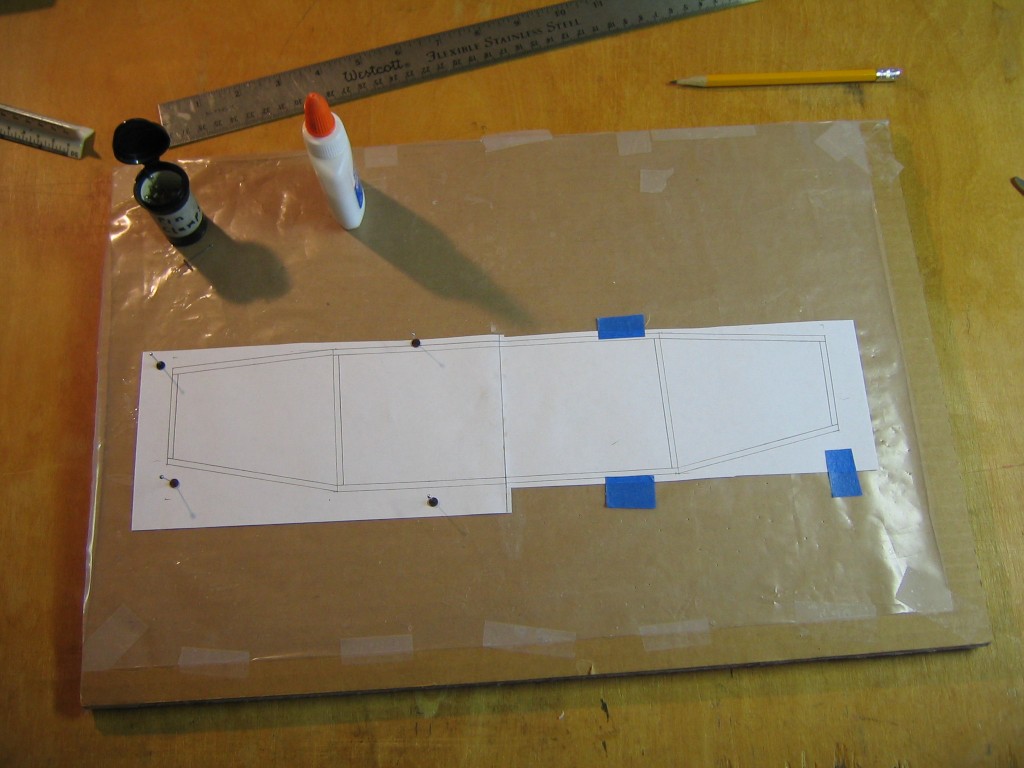
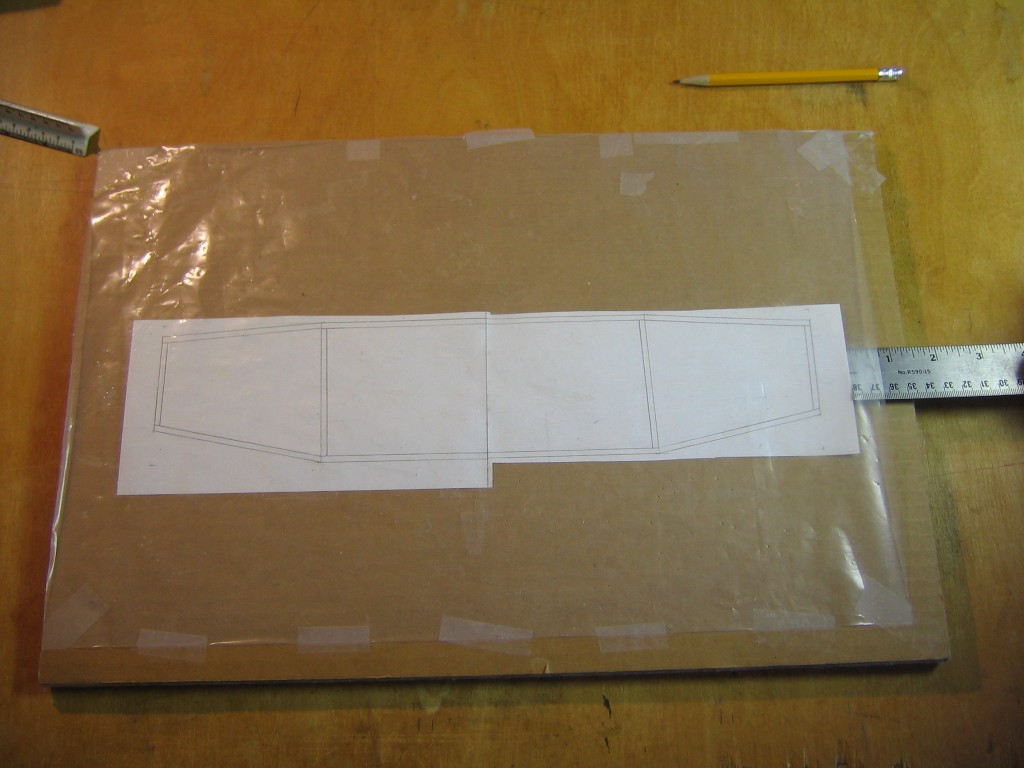
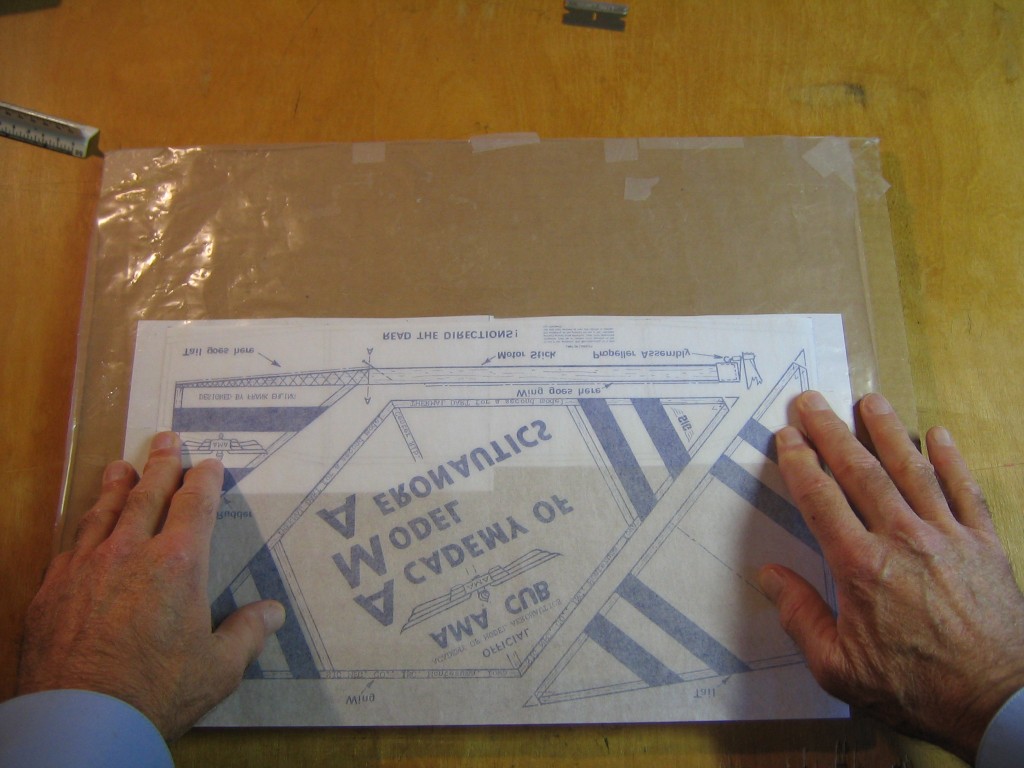
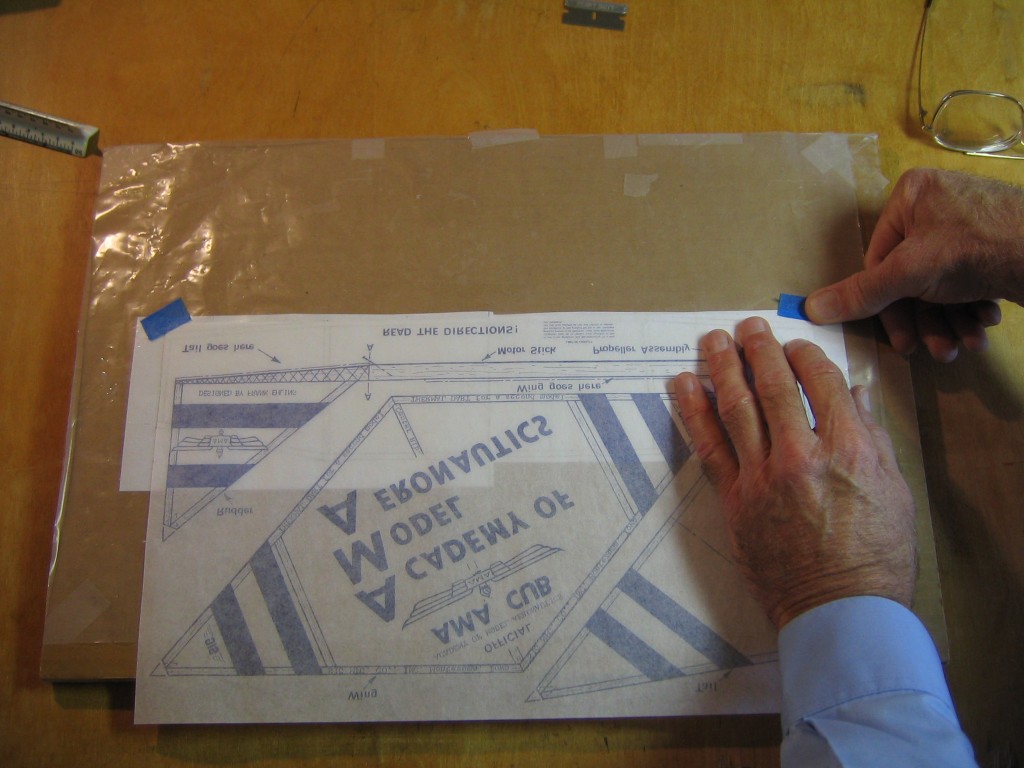
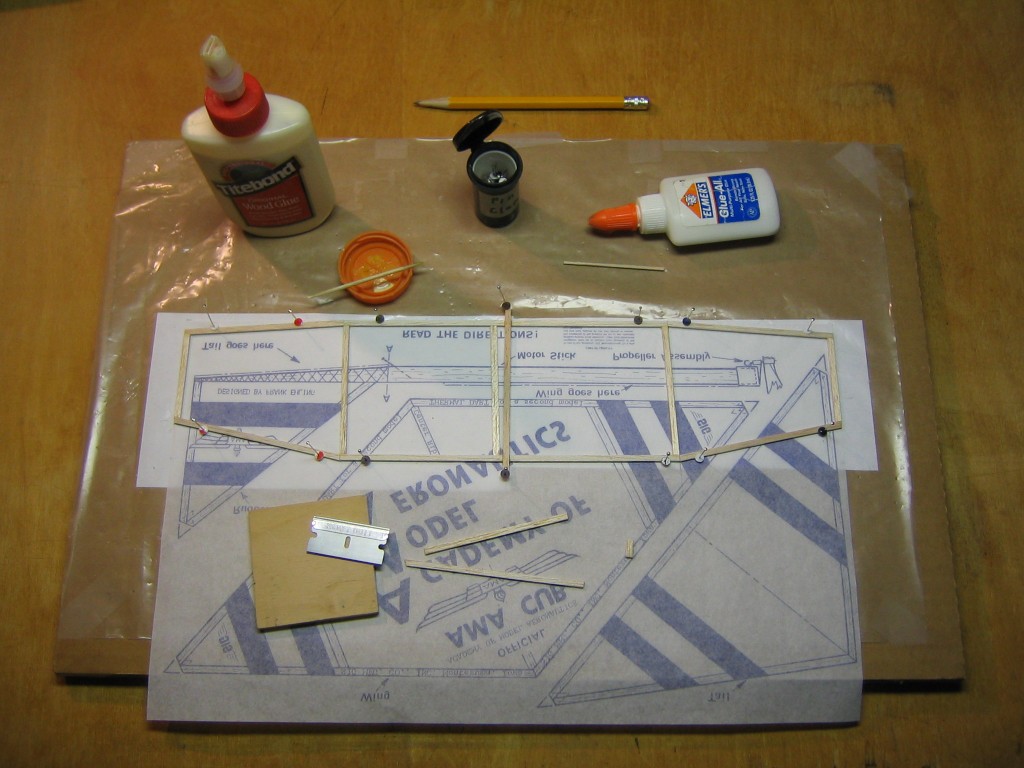
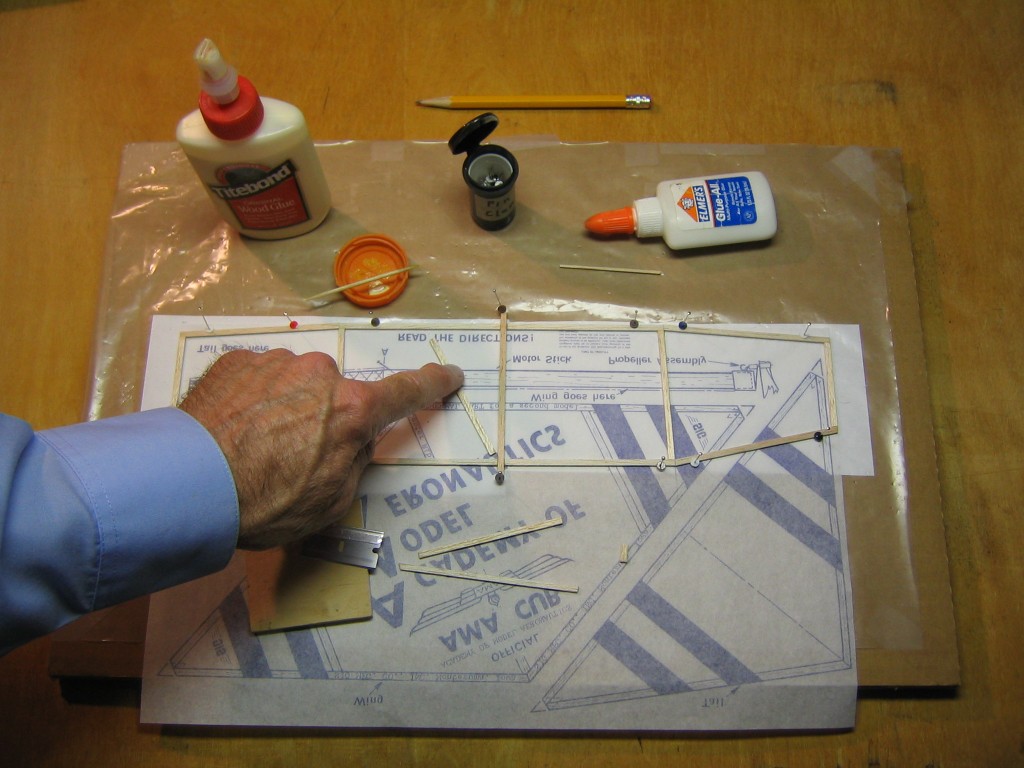
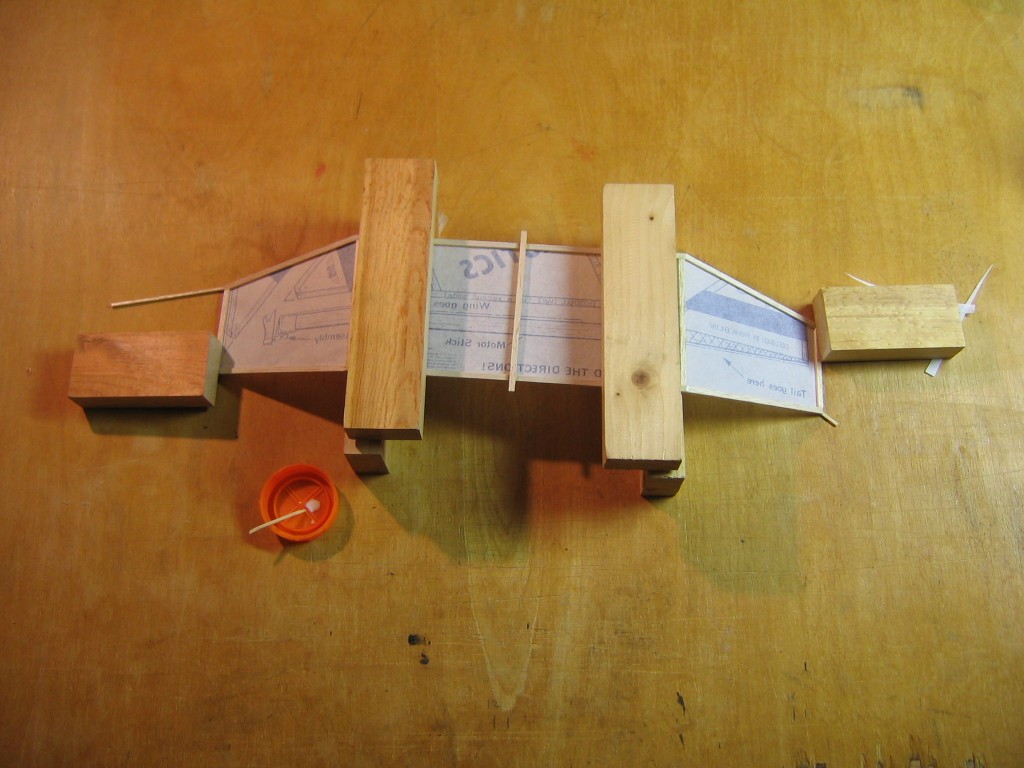
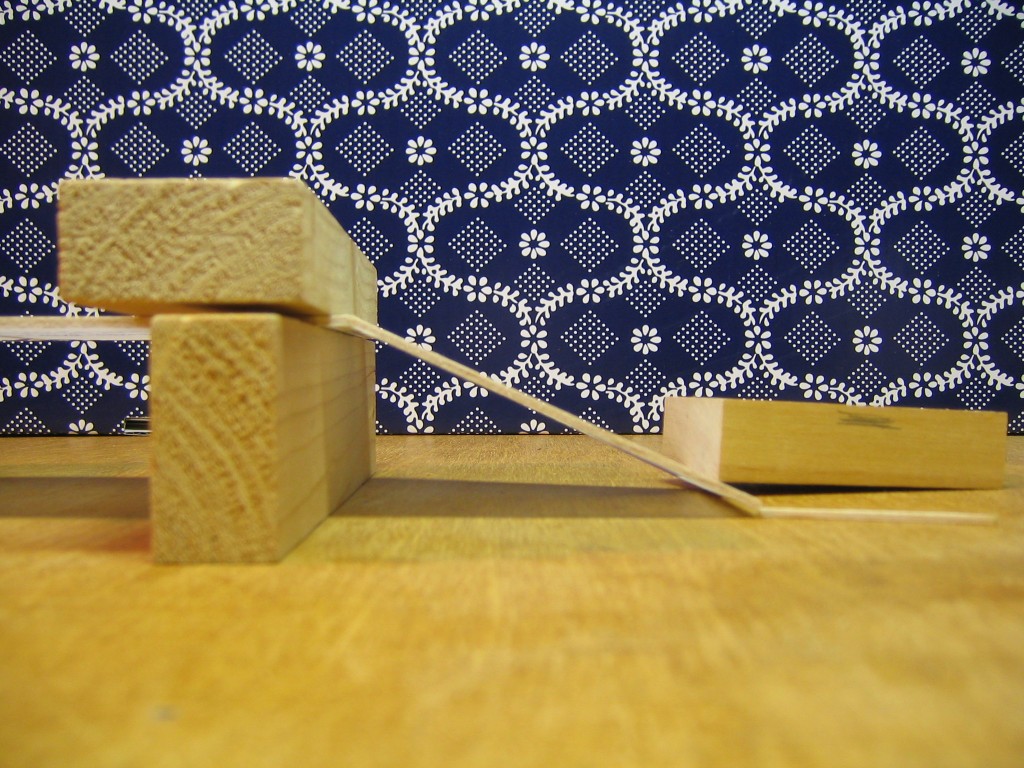
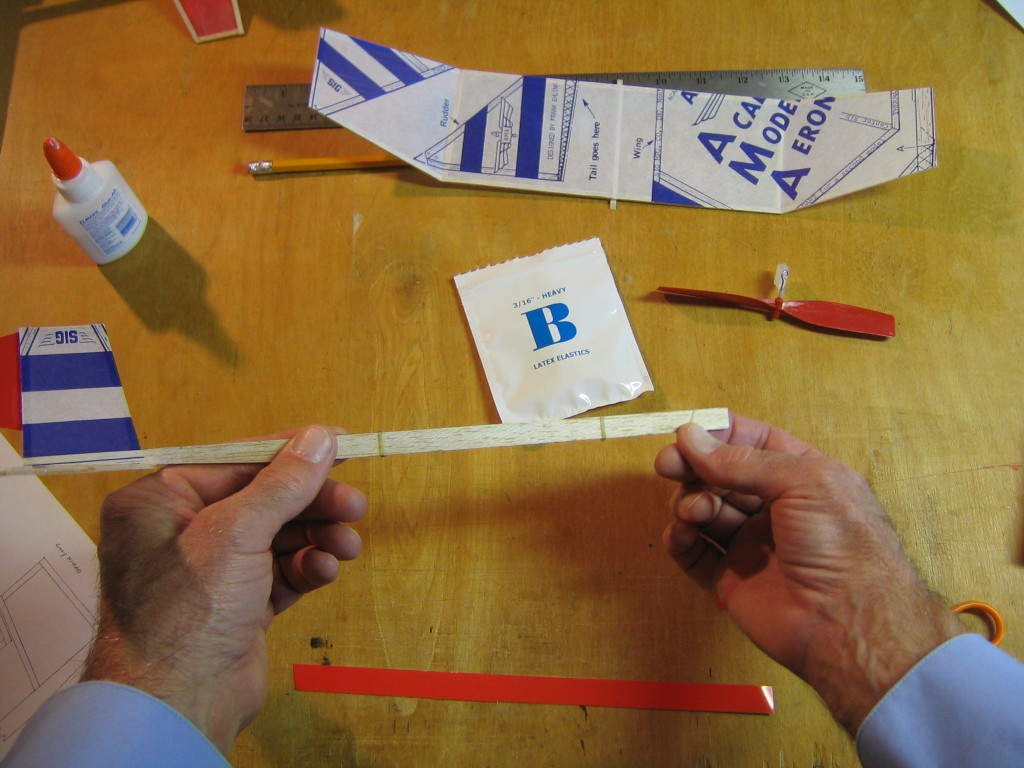
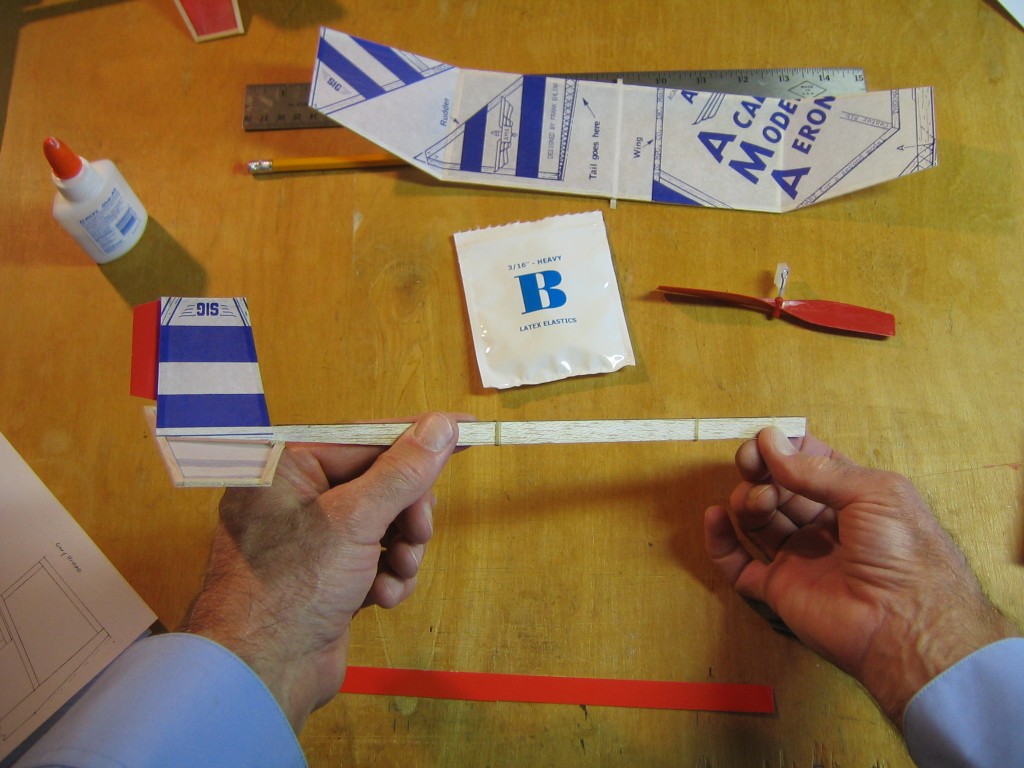
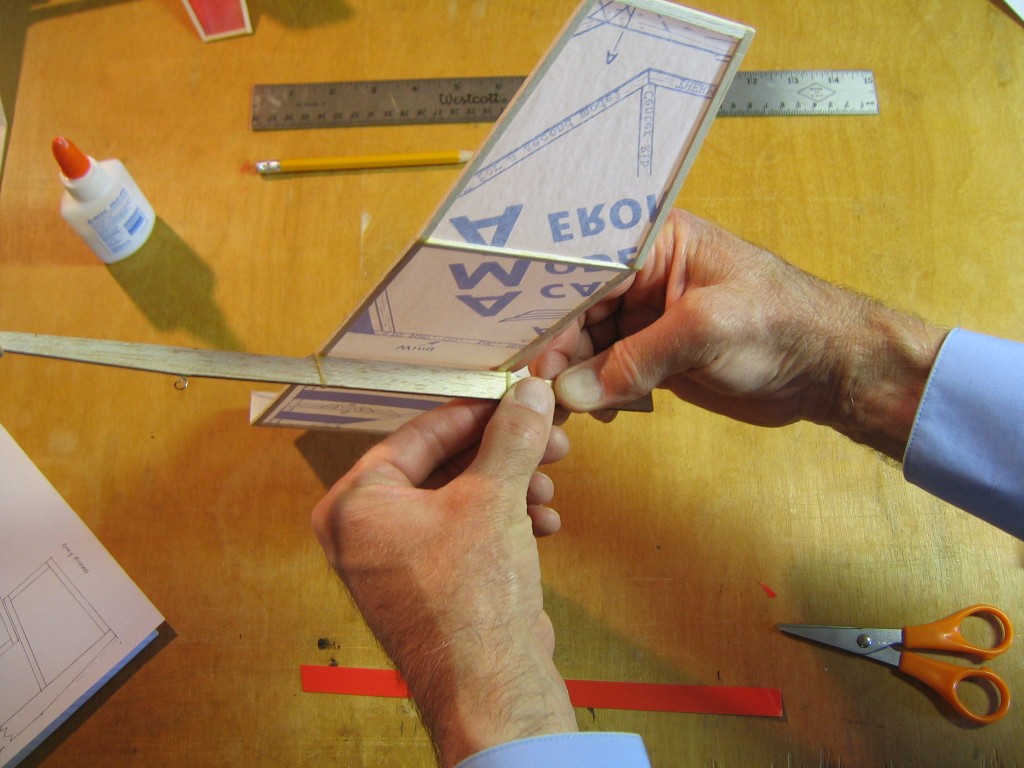
Very nice! I wonder how an AMA cub squirrel would fly. 🙂
I’m sure it would fly fine! I was just thinking about that. The 1/16″ x 1/8″ sticks in the AMA Cub kit are 9″ long. The Squirrel wing spars are 12″ long. There would be two ways to make a Squirrel from an AMA Cub kit. One would be to splice two 9″ sticks together. It is tricky to get a strong splice joint, requiring skill beyond the beginner level. The other would be to cut some 12″ sticks from sheet wood.
The 16″ wing paper for the Squirrel will not fit along the 14″ long side of the AMA Cub paper. It just barely fits along the diagonal. Would there be a problem with paper cut diagonally to the grain? Only way to find out is to try it. The AMA Cub paper is very sensitive to humidity. But it is tougher than the usual domestic tissue, which is also sensitive to humidity. Building during low humidity will reduce that problem.